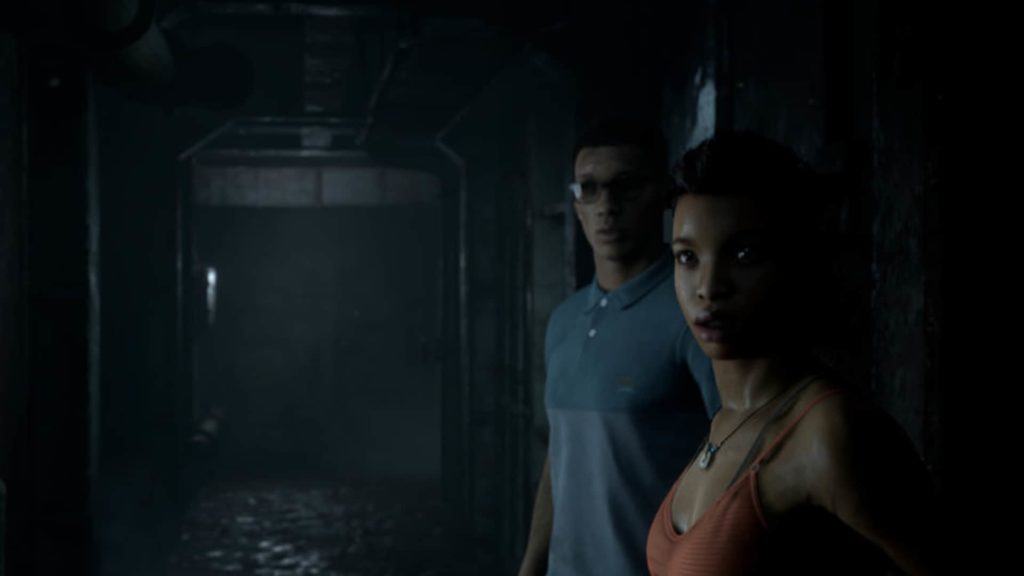Video Gamer is reader-supported. When you buy through links on our site, we may earn an affiliate commission. Prices subject to change. Learn more
Man of Medan, the upcoming title from developer Supermassive Games, begins with a choice I’ve sorely yearned after for as long as I’ve been watching horror films. We open on a wide shot of the Medan, a merchant ship, churning on cauldron-black seas and blasted with broadsides of rain. As the spookesome tone is smeared on, a narrator chimes in, saying, ‘Sometimes we are guided by our heart… and at other times by our head.’ My first thought was, ‘well I wonder which one guided Janet Leigh past the check-in desk at the Bates Motel, past the creep with the ghoulish grin?’
Either way, having long been frustrated at people in horror films foregoing light switches in favour of flickering Zippos; or bellowing inquisitively at the top of their lungs in cavernous mansions; or even blithely neglecting to check the backseat before making their panicked getaway, I was determined to go with my head. Thankfully, a handy compass appeared on screen and had me tilt one way or the other, toward either ‘emotional’ or ‘rational,’ presumably twisting the tale accordingly. (Although, having played for a total of 10 minutes and 19 seconds, I can only but presume.)
This chapter, in what Supermassive Games is calling The Dark Pictures Anthology, sees a group of beddable young thrillseekers embark on a mission to mine the myth – and perhaps the sunken spoils – of the titular ghost ship. What better group for the job than one that is, as the heroine of the demo describes, ‘over-privileged and over-packed, out for adventure and without a clue?’ The Ourang Medan (which is Malay for ‘Man of Medan’ – a city in Indonesia), as legend has it, was a merchant ship found drifting on the Straits of Malacca, its crew mysteriously wiped out and not a single soul left on board. Well, we’ll see about that.

Play will be familiar to anyone weaned on Supermassive’s third-person, horror-adventure style with its previous outing, Until Dawn. Sidling through the soggy bowels of the ship, you look for clues, which reveal themselves with a telling twinkle. Any duress, of which there is plenty, is handled with quick time events. Man of Medan’s signature flourish is that emotional/rational compass, which pops up intermittently at each fork in the road. (why, then, did it present itself at the beginning, only to have me re-confirm my rationality at each quandary?)
The best thing about Man of Medan was not digging around for clues, nor was it in hammering buttons in distress; it was moving. Simple movement was sublime. Your slow skulk feels like you’re wading through the teasing treacle of a nightmare – the ones where some foul pursuer lurks just far enough away to give you a glimpse of hope. Moreover, when you’re free to move about, it’s the dynamic scares that chill the blood. The static, cinematic angles of Man of Medan are the purveyors of its most potent touch. The slow trucking shot that framed my journey down a dripping hallway lingered and prowled as if controlled by a serial killer.
In fact, the most effective scare was one that, if presented to me in the cinema, would produce nothing more than a snobbish sigh. As I was walking from one end of a room to the other, a pipe emitted a steamy shriek, to the accompaniment of Hollywood strings and brass. Yes, it was a jump scare, that cheapest of thrills, but, hidden in the folds of play, it made me squeal like a small child.

Supermassive’s games, owing to their shared heritage of both Quantic Dream’s Fahrenheit and Capcom’s Resident Evil franchise, rely on sanding off the rough edges that freedom presents us with. Until Dawn, and now Man of Medan, both require your arms and legs to remain inside the ride most of the time – not to avoid being bitten off by whatever steals through the shadows, but lest they be bashed by the narrative obstacle of the player. But it’s when you’re free to get off and roam about for a bit that you’re more likely to come away in need of clean undergarments.
At the end of my brief time with the game, it seemed to me that the story, the characters, the hokey set-up, and the quick time events of its monstrous peril weren’t going to get into my head. But it’s classiest parts – those that make me want to play on – got me right in the chest, scares that in my heart I know shouldn’t have caught me out, but that I fell for anyway. Perhaps my compass belonged pointing the other way, after all.

